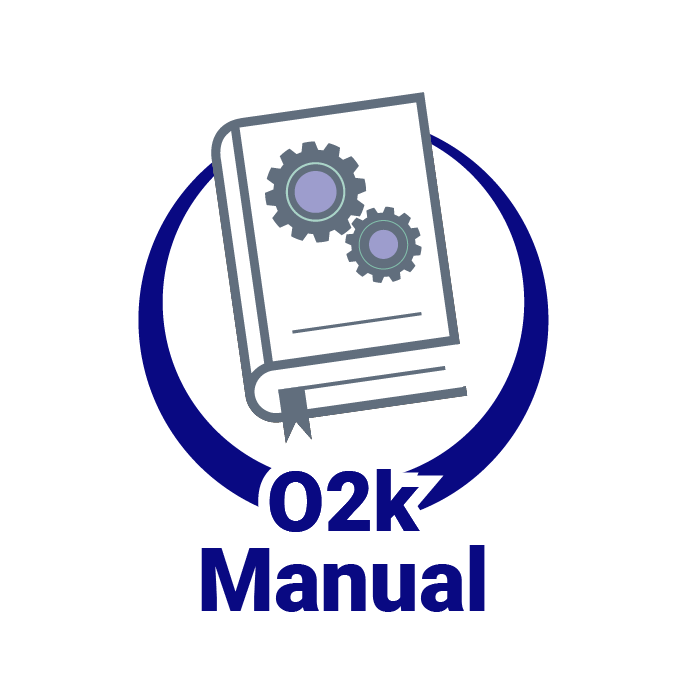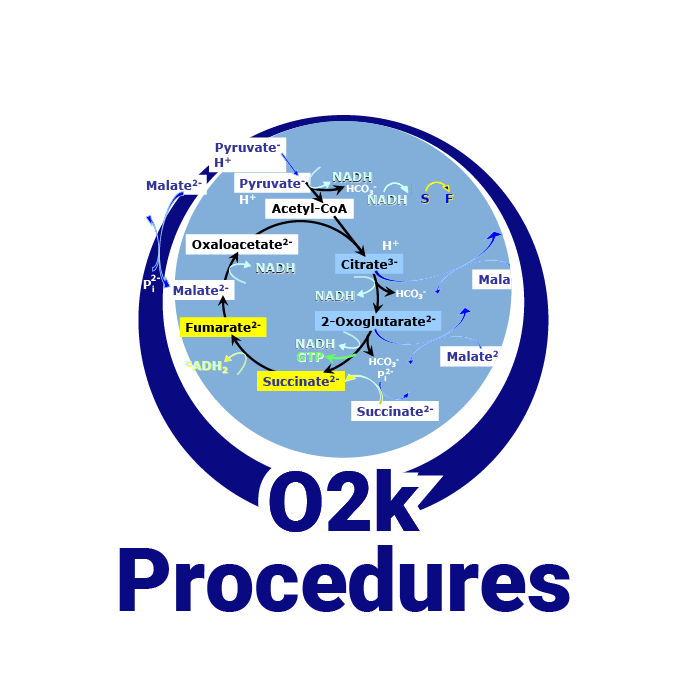Difference between revisions of "Closed chamber"
From Bioblast
m (Reverted edits by Antunes Diana (talk) to last revision by Gnaiger Erich) Tag: Rollback |
|||
| Line 6: | Line 6: | ||
}} | }} | ||
:::: '''Closed chamber''' means that the chamber and the capillary of the stopper | :::: '''Closed chamber''' means that the experimental chamber and the capillary of the stopper are filled with liquid and no air space or bubble is present in the chamber with the stopper fully inserted into the volume-calibrated position. Any titrations are performed between closed states, but not during a closed state. For closing the chamber without a gas bubble, an excessive volume of liquid has to be present in the chamber (minimum 2.1 mL for the 2-mL chamber; 0.55 mL for the 0.5-mL chamber). The stirrer can be switched on. Any foam should be avoided. Before inserting the stopper, the capillary of the stopper must be free of aqueous medium. The conical shape of the standard stopper facilitates bubble-free closing of the chamber with stirrers switched on - the bubbles escape through the central capillary. After closing the chamber the excessive liquid must be aspirated from the receptacle of the stopper. | ||
:::: The procedure of | :::: The procedure of bubble-free closing a chamber with a multisensor stopper is described in the manual for ion selective electrodes [[MiPNet15.03]]. | ||
:::: | ::::» ''Compare'': [[Open chamber]] | ||
{{Template:Keywords: Oxygen signal}} | {{Template:Keywords: Oxygen signal}} | ||
Revision as of 09:57, 7 September 2020
 |
Closed chamber |
MitoPedia O2k and high-resolution respirometry:
O2k-Open Support
Description
The O2k chamber can be used as a closed system or open system. Gas bubbles must be avoided.
Abbreviation: C
- Closed chamber means that the experimental chamber and the capillary of the stopper are filled with liquid and no air space or bubble is present in the chamber with the stopper fully inserted into the volume-calibrated position. Any titrations are performed between closed states, but not during a closed state. For closing the chamber without a gas bubble, an excessive volume of liquid has to be present in the chamber (minimum 2.1 mL for the 2-mL chamber; 0.55 mL for the 0.5-mL chamber). The stirrer can be switched on. Any foam should be avoided. Before inserting the stopper, the capillary of the stopper must be free of aqueous medium. The conical shape of the standard stopper facilitates bubble-free closing of the chamber with stirrers switched on - the bubbles escape through the central capillary. After closing the chamber the excessive liquid must be aspirated from the receptacle of the stopper.
- The procedure of bubble-free closing a chamber with a multisensor stopper is described in the manual for ion selective electrodes MiPNet15.03.
- » Compare: Open chamber
- Bioblast links: Oxygen signal - >>>>>>> - Click on [Expand] or [Collapse] - >>>>>>>
- Specific
- O2k-Procedures
- MiPNet O2k-Procedures
- General
- » Oxygen, dioxygen, O2
- » Oxygen calibration - DatLab
- » Oxygen solubility
- » Oxygen solubility factor
- » Oxygen pressure
- » Concentration
- » Activity
- » Pressure - Pascal
- » Barometric pressure
- » High-resolution respirometry
- » OroboPOS
- » Polarographic oxygen sensor
- » MitoFit Quality Control System
- » Sensitivity
- General
- Other keyword lists




